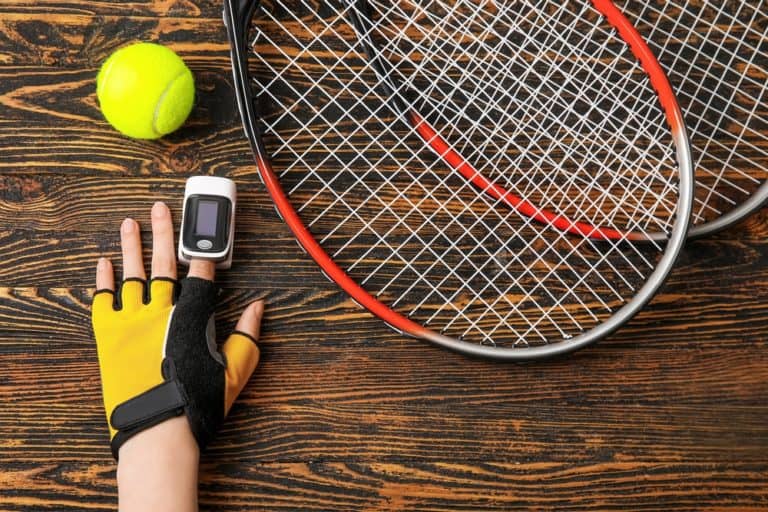What Is Deuce And Advantage In Tennis?
Tennis has many terms and rules that are not used in other sports, and this can make it confusing for those who are new to the game. One common question is what are deuce and advantage, and how do they form part of the game’s scoring?
The term deuce is used when players are tied at three points each, and the score is 40-40. The winner is the first player to gain two consecutive points. Whoever scores the first point is said to have the advantage, and if the player with the advantage scores another point, they win the game.
If the player without advantage scores a point, the deuce is restored, and the game continues until one player scores two consecutive points and wins the game. These rules may seem complicated for someone new to the sport, but a basic introduction will have you playing and watching in no time.
Understanding Deuce And Advantage In Tennis
It is necessary first to understand how tennis is scored to understand deuce and advantage. A tennis match is broken into three parts: a game, a set, and a match.
A game of tennis is played until one of the players has scored four points. A set refers to several games played between two opponents until one of the players has won six or more of the games. A tennis match will continue until one player has won three to five sets, meaning they won the most games overall.
Points in tennis are scored like this:
- 0 points are referred to as a score of Love
- 1 point is referred to as a score of 15
- 2 points are referred to as a score of 30
- 3 points are referred to as a score of 40
When both players have a score of 15, or 30, the score is referred to as 15-all or 30-all. But when both players are tied at three points and have a score of 40 each, it is not referred to as 40-all. Instead, it is called deuce.
To break the tie in deuce, a player needs to score two points in a row, which means they win the game. The player who scores the first point is said to have the advantage. If the player who served scores the first point, the following point is called ”advantage in” or “ad in.”
If the player who receives the serve scores the first point, their next point is called ”advantage out” or ”ad out”. If a player scores one point but does not score the second, the game returns to deuce.
In doubles tennis matches, where there are four players on the court playing in teams of two, deuces are not used. Doubles matches use a no-advantage or no-ad scoring system, meaning they play until one side has scored four points.
If there is a tie score of 40-40 during a doubles match, the next round is played as a sudden death round, meaning that the next point scored determines the winning team. In recreational tennis, deuce and advantage are also commonly not used.
No limit exists to the number of times a game can return to deuce, which can extend the game’s length considerably. The most deuces recorded in a professional match happened at the 1975 Great Britain Championships.
During this match, players Keith Glass and Anthony Fawcett played 37 deuces in one game.
What Does The Word Deuce Mean?
The game of tennis has its origins in France, and historians believe modern tennis evolved from a French game played 250 years ago by monks called Jeu de Paume. In Jeu de Paume, the players used their hands rather than rackets to hit a ball over a rope rather than a net.
The term deuce is believed to come from the French word deus, meaning two, or the term à deux de jeu, which means two points away from winning the game.
Another tennis term that originates from French is love, which is thought to come from the French word l’oeuf, which means egg, possibly because an egg looks like a zero. Interestingly neither of these terms is used in the French Open, a major tennis tournament held in Paris each year.
In the French Open, they use the term zero to refer to a score of zero points rather than love, and they use the term égalité, which means equality,to refer to a 40-40 tie rather than the word deuce.

What Is The Best Strategy To Use In Deuce?
Deuce in a tennis match can be challenging, as it requires extra energy and a clear strategy on what shots to use to win the needed two points.
As there is no limit to how many times the game can return to deuce, it could extend the game for a long time. An extended game can be physically draining, and it is essential to be fit enough to retain your energy no matter how long the deuce continues.
The primary strategy to follow when playing deuce depends on whether you have the advantage. Many tennis commentators and coaches agree that having the advantage can be an excellent time to play more aggressively.
The reasoning behind this is that if you make a mistake on your serve, the game goes back to deuce, and you will have another chance to gain the advantage and win the game.
However, if you do not have the advantage, playing too aggressively leaves you at risk of making unwanted mistakes and potentially losing the game. If you don’t have the advantage, it may be best to play conservatively to prevent your opponent from scoring their needed second point.
At the same time, switching up your shots can be an excellent way to avoid becoming predictable to your opponent. If you play the same shot repeatedly, your opponent will know what to expect and may use that to their advantage.
Because the game can remain in deuce for a long while, it is also essential to avoid becoming impatient or frustrated. Losing your patience and becoming reckless or overly aggressive because you want the deuce to end could lead to making mistakes and losing the game.
Conclusion
Deuce and advantage are two tennis terms used to refer to a game where both players have three points or a score of 40-40. The first player to score one point in deuce is said to have the advantage, and if they can score another consecutive point, they win the game. Although tennis rules can seem confusing at first, once you understand the basics of scoring and theterms used, you will be able to enjoy the sport whether you are a player or a fan watching at home.
References
- https://www.usta.com/en/home/improve/tips-and-instruction/national/tennis-scoring-rules.html
- https://www.sportingnews.com/us/tennis/news/tennis-scoring-explained-rules-system-points-terms/7uzp2evdhbd11obdd59p3p1cx
- https://www.latimes.com/archives/la-xpm-2009-mar-22-sp-20-second-timeout22-story.html
- https://www.britannica.com/sports/deuce-tennis
- https://www.tennis-warehouse.com/learning_center/how_to/keep_score_in_tennis.html







